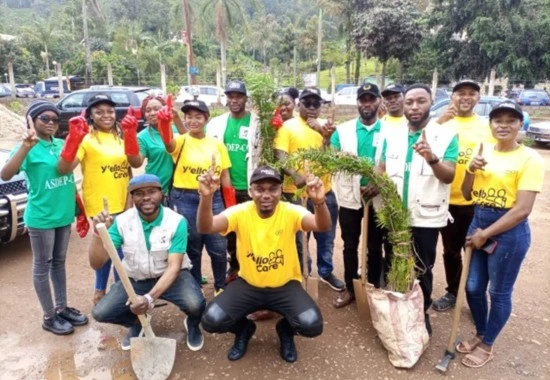Report of Tree planting Exercise
- Home
- Report of Tree planting Exercise
Report On The Activity Of Tree Planting Exercise
CONTEXT AND JUSTIFICATION
In line with its mission, ASDEPCO collaborates with other organizations and institutions to create a stable, sustainable environment for communities through community development and environmental protection by encouraging tree planting and many other activities that can build a self-reliance and sustainable environment. Our goal is to create stable improvements on the living standards of individuals and communities as a whole.
We are leading communities towards self-reliance strategies and sustainable environmental practices through innovative strategies to build economic capacities and potentials for all. In line with our mission, ASDEPCO collaborated with MTN Cameroon in tee exercise of tree plant so as to enhance the protection of our ecosystem in the municipality of Bamenda II precisely at Ayaba Street.
The Planting Exercise
In line with ASDEPCO goal, we sought to carry out this activity of tree planting in Bamenda II municipality in collaboration with MTN Cameroon on the 17th of Saturday 2023. The planting of Callistemon viminalis tree that took place in the morning was carried out by 16 volunteers in number from 10:00AM with 100trees that were planted covering a total surface area of about 1kilometer and the depth of planting a tree dip into the soil was about 16inches while maintaining a distance of 2meters apart. The aim of this activity was to enhance the protection of our ecosystem while reducing the rate of climate change and global warming.
Callistemon Viminalis commonly known as bottlebrush because of their cylindrical brush like flower structure are known for their beautiful evergreen upright shrub that will grow to 1 to 3 meters tall that blooms in early summer each year. The actual flowers of the bottlebrush are tiny, creamy white nubs close to the stem and they form as buds in cylindrical clusters surrounding the stem. When they bloom, the petals open to reveal long, colorful stamens, each tipped with an anther bearing yellow pollen and its flowers-spikes can generally be white or greenish but pink and red. Among many other species of trees that could have been planted, Callistemon was chosen because it is environmentally friendly as it also provides shades to individuals and it has been reported to have various medicinal values as it is considered as an;
- Antibacterial activity as extracts from the Callistemon leaves have antibacterial activity that fight against pathogenic bacteria.
- Antifungal activity extracted from its leaves and roots.
- Antioxidant activities and Anti-inflammatory.
- Insecticidal properties
- Cardioprotective and Anticancer as leaves are boil and taken as tea to regulate blood pressure and cardiovascular malfunctions.
Aside its medical used, it is used as shades during sunny days, decorates the environment and some researches supported the used of callistemon viminalis extracts for the preparation of metal oxide nanoparticles.



Risk Assumption or problems encountered
- There are no mechanisms for follow up. Callistemon needs regular watering while the tree is young ad annual fertilization until it matures.
- No favorable, conducive or assured soil for its growth and wellbeing.
- The survival is not guaranteed as there are no experts or volunteers to daily or weekly follow up on the growth of the tree.
- There is also the risk of stray animals that can damage the planted trees as the area where the trees are planted is not fenced or under surveillance.
- There is also no assurance of growth as the soil on which the trees were planted was not mixed with manure or fertilizers.
Risk Mitigation strategies or proposed solutions
- It is important to choose a location with well-draining soil mixing compost into the soil and mulching can help to improve drainage.
- Young shrubs should be watered each week by slowly and deeply saturating the soil so a team of experts or volunteers should consider visiting the area on a weekly basis so as to water during periods of no rain till it grows.
- A team of experts should be paid to follow up the growth of the plant so as to ensure or watch out for pests that can cause damage to foliage and if not addressed, can sometimes serve as vectors for disease spread.
After the activity which was indeed a success, ASDEPCO took care of the feeding and transportation of the volunteers. Below are some pictures of the volunteers that were taken during the planting exercise.

